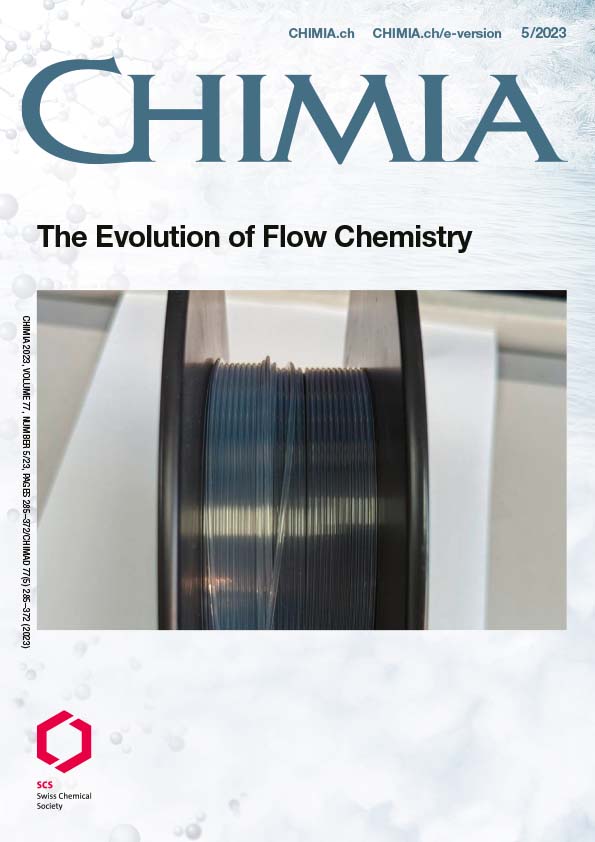Going with the µFlow: Reinterpreting Energy Input in Organic Synthesis
DOI:
https://doi.org/10.2533/chimia.2023.327PMID:
38047829Keywords:
Enabling technologies, Electrochemistry, Hydrodynamic cavitation, Microfluidics, Microfluidics plasma, Microsynthesis, Microwave, Photochemistry, Process intensification technology, UltrasoundAbstract
The popularity of microflow chemistry has skyrocketed in the last 20 years, more and more chemists are switching from macro-batch reactors to miniaturized flow devices. As a result, microfluidics is paving its way into the future by consolidating its position in organic chemistry not only as a trend but as a new, effective, and sustainable way of conducting chemistry, that clearly will continue to grow and evolve. This perspective highlights the most relevant examples of innovative enhancing technologies applied to microflow reactors aimed to improve and intensify chemical processes. The extensive applicability of microflow chemistry is further illustrated by briefly discussing examples of complex integrated microsystems and scale-up technologies, demonstrating ultimately that microflow chemistry has the potential to become the ideal technology for the future.
Funding data
-
KU Leuven
Grant numbers BOF-IDN/20/014G
Downloads
Published
Issue
Section
License
Copyright (c) 2023 Laura Y. Vázquez-Amaya, Guglielmo A. Coppola, Erik V. Van der Eycken, Upendra K. Sharma

This work is licensed under a Creative Commons Attribution 4.0 International License.







